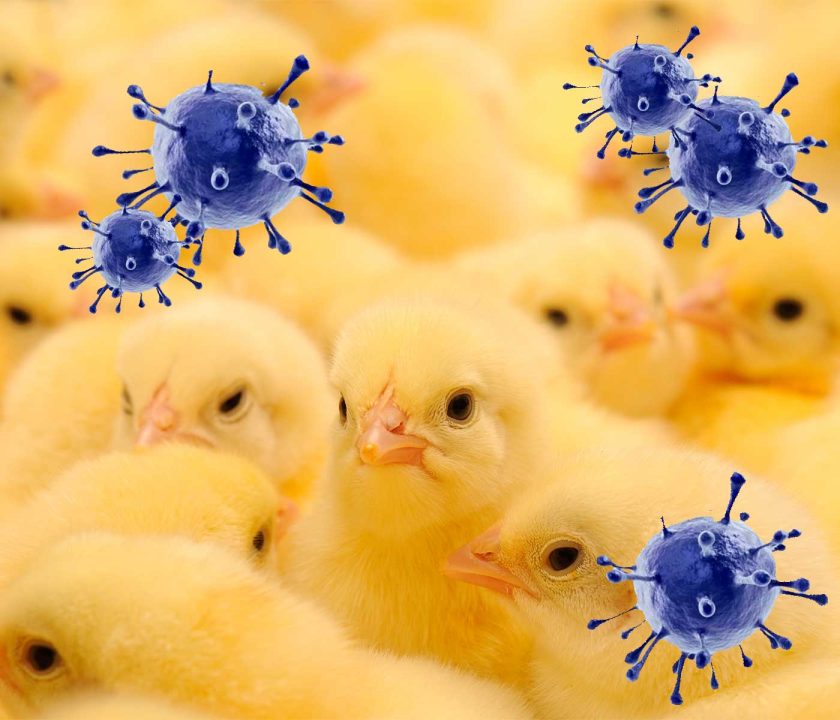Contenido disponible en: Español (Spanish)
Infectious bronchitis is a highly relevant disease in all poultry production countries. This disease is caused by the infectious bronchitis virus (IBV), a coronavirus that shows continuous mutations and recombinations.
Infectious bronchitis is mainly associated with respiratory problems, although kidney problems have also been described.
- In addition, it causes a drop in laying, deformed and discolored eggs and fragile eggshells in hens. Furthermore, the “false layers” syndrome has even been described due to the early destruction of the oviduct.
- IBV also predisposes birds to secondary bacterial infections, such as Escherichia coli, associated with increased mortality.
CASE
- Cage-raised laying hen farm with 7,500 35-week-old animals.
- They present mild respiratory symptoms, poor quality of the eggshell (“shriveled eggs”) from the start of laying, and a drop in laying by around 10-15%.
- In addition, they have 16 to 20 deaths daily.
- The poultry house has a controlled light and temperature program and forced ventilation.
Three animals with severe respiratory symptoms were sent to the laboratory. On examination, the animals were 0.5 kg below standard bodyweight.
The necropsy reveals that the birds had:
Figure 1. Lymphatic plexuses of the neck
marked, a sign of cachexia
Figure 2. Calcification defect in the keel bone
Figure 3. Presence of fibrin in the heart
Figure 4. Presence of fibrin in the coelomic cavity with adhesions
Figure 5. Omentum opacity
Figure 6. Oophoritis with the presence of fibrin
Figure 7. Eggs in the oviduct with calcification defects
The necropsy and anamnesis findings are nonspecific but could be compatible with an infectious bronchitis process. The first signs of the disease are typical upper respiratory tract disease (coughing, sneezing, head shaking…), these being more common in young birds. Infection can lead to growth delays, and some birds may die suddenly from bronchial occlusion.
In addition, it is usually accompanied by a marked drop in laying (10-15%), poor quality eggs (liquid albumen, fragile and depigmented eggshell …), ovary degeneration, and inflammation of the oviducts. Mortality rates are generally higher in the presence of secondary infections. A colibacillosis due to a secondary Escherichia coli infection can manifest itself in different ways in birds, with colisepticemia being the most characteristic sign.
Diagnostic tests
For the diagnosis, serological analysis of the animals (indirect test), microbiological and molecular analyses (PCR) were performed as a diagnostic test to detect the causal agent.
Serological studies are mainly carried out to identify whether animals have developed antibodies against a pathogen, both in the field and in the vaccine.
Keep up to date with our newsletters
Receive the magazine for free in digital version
REGISTRATION
ACCESS
YOUR ACCOUNT
LOGIN
Lost your password?

